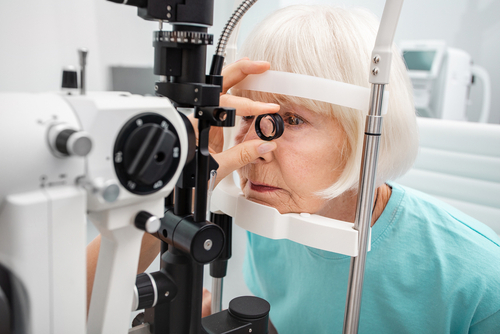Posted by: Eye Health Northwest in Retina on October 2, 2023

As you grow older, so do your eyes. Age-related changes in the eye can lead to conditions that require immediate treatment to avoid permanent vision loss.
Keep reading to learn about how macular holes and retinal tears occur and why they pose serious threats to your eye health!
What is Vitreous?
While a macular hole is different from a retinal tear, both can result due to changes in the vitreous. A gel-like substance that fills the eye, vitreous, is made up of tiny fibers that attach to your retina.
These fibers are microscopic, but as you age, they clump together. Vitreous also shrinks with age, pulling away from the retina. Sometimes, it sticks to the retina.
What is a Macular Hole?
The macula is a portion of the retina just above the optic nerve. It enables you to see clearly in your direct line of sight.
When vitreous sticks to the retina, this can cause the macula to stretch. The thinning macula can often develop holes or openings.
This will affect your central vision. At first, things will look blurry, wavy, or distorted, but if the hole grows larger, blind spots or dark areas will appear.
A macula hole will not affect your peripheral vision. A macular hole can also form if the macula swells due to certain eye conditions or if there’s an injury to the eye.
What is a Retinal Tear?
The retina is a thin layer of nerve cells in the back of the eye, located near the optic nerve. When the lens of the eye focuses light, the retina converts it into electrical signals that are sent along the optic nerve to the brain.
The retina can develop a small hole or tear as the result of an eye injury or trauma or from vitreous shrinking and pulling away from the retina. This situation can lead to further complications.
A retinal tear can allow fluid to enter beneath the retina, build up, and cause a retinal detachment. The risk of a retinal tear increases with age.
An increase in floaters can be a sign of a retinal tear. Early treatment can prevent the tear from getting worse, which can lead to a detached retina.
What Are Some Common Symptoms of Retinal Conditions?
An increase in floaters can be a sign of a retinal tear. So is the sudden onset of flashing lights or a dark curtain across portions of your vision.
Early treatment can prevent the tear from getting worse, which can lead to a detached retina.
Can Retinal Tears Be Treated?
Retinal tears can be treated. The goal is to seal off the tissue around the incision so it will not grow larger and lead to retinal detachment.
Two forms of treatment are available depending on the retinal tear. Laser surgery is used to seal the retina to the wall of the eye. Cryotherapy can also be used.
This is the application of extreme cold to the areas around the tear. Scar tissue forms, preventing further tearing.
Are you experiencing changes in your vision? Schedule an appointment at EyeHealth Northwest in Portland, OR, today!

